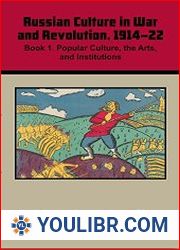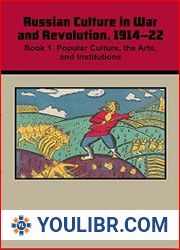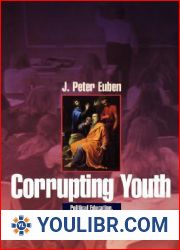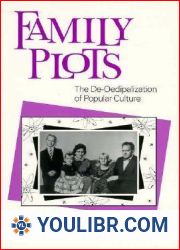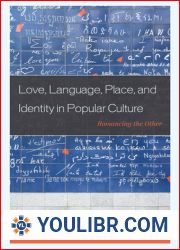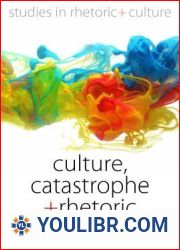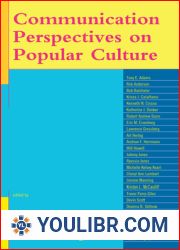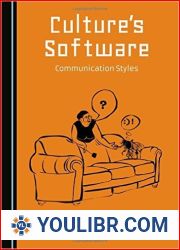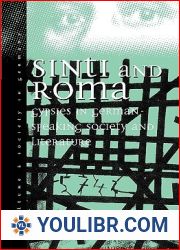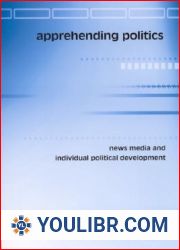
BOOKS - Speaking Hatefully: Culture, Communication, and Political Action in Hungary (...

Speaking Hatefully: Culture, Communication, and Political Action in Hungary (Rhetoric and Democratic Deliberation)
Author: David Boromisza-Habashi
Year: May 1, 2012
Format: PDF
File size: PDF 1.5 MB
Language: English
Year: May 1, 2012
Format: PDF
File size: PDF 1.5 MB
Language: English
The Plot: In the book "Speaking Hatefully: Culture, Communication, and Political Action in Hungary," author David Boromisza-Habashi delves into the complex and contentious issue of hate speech and its role in shaping the political and moral landscape of Hungary. Through a combination of ethnographic and discourse analytic methods, the author provides a nuanced understanding of the various meanings and interpretations of hate speech in Hungarian society, and how these meanings are used to shape political discourse and moral struggles. The book begins by exploring the concept of hate speech and its various definitions, highlighting the challenges of defining hate speech in a way that is both inclusive and exclusive. The author argues that rather than relying on pre-existing definitions, it is more productive to approach the topic through a combination of empirical research and discourse analysis. This approach allows for a deeper understanding of the sociocultural contexts in which hate speech operates, and the ways in which it is used to shape political and moral discourse. The author then turns to the historical and cultural context of Hungary, where the concept of hate speech has been particularly salient in recent years. He examines the ways in which hate speech has been used to delegitimize certain groups, such as the Romani people, and how this has contributed to the marginalization and exclusion of these communities from mainstream society.
В книге «Speaking Hatthly: Culture, Communication, and Political Action in Hungary» автор Давид Боромиша-Хабаши углубляется в сложный и спорный вопрос о разжигании ненависти и его роли в формировании политического и морального ландшафта Венгрии. Используя сочетание этнографических и дискурсивных аналитических методов, автор дает тонкое понимание различных значений и интерпретаций языка ненависти в венгерском обществе, а также того, как эти значения используются для формирования политического дискурса и моральной борьбы. Книга начинается с изучения концепции языка ненависти и ее различных определений, подчеркивая проблемы определения языка ненависти таким образом, чтобы он был одновременно инклюзивным и исключительным. Автор утверждает, что вместо того, чтобы полагаться на уже существующие определения, более продуктивно подходить к теме через сочетание эмпирического исследования и анализа дискурса. Такой подход позволяет глубже понять социокультурные контексты, в которых действует язык ненависти, и способы его использования для формирования политического и морального дискурса. Затем автор обращается к историческому и культурному контексту Венгрии, где в последние годы особенно ярко проявляется понятие языка вражды. Он рассматривает способы использования языка ненависти для делегитимизации определенных групп, таких как цыганский народ, и то, как это способствовало маргинализации и исключению этих общин из основного общества.
Dans Speaking Hatthly : Culture, Communication, and Political Action in Hungary, l'auteur David Boromisha-Habashi explore la question complexe et controversée de l'incitation à la haine et de son rôle dans la formation du paysage politique et moral de la Hongrie. En utilisant une combinaison de méthodes d'analyse ethnographique et discursive, l'auteur donne une compréhension subtile des différentes significations et interprétations du langage de haine dans la société hongroise, ainsi que de la façon dont ces significations sont utilisées pour façonner le discours politique et les luttes morales. livre commence par l'étude du concept de langage de haine et de ses différentes définitions, en soulignant les problèmes que pose la définition d'un langage de haine d'une manière à la fois inclusive et exclusive. L'auteur affirme qu'au lieu de s'appuyer sur des définitions existantes, il est plus productif d'aborder le sujet à travers une combinaison d'études empiriques et d'analyse du discours. Cette approche permet de mieux comprendre les contextes socioculturels dans lesquels opère le langage de la haine et la façon dont il est utilisé pour façonner le discours politique et moral. L'auteur se réfère ensuite au contexte historique et culturel de la Hongrie, où la notion de langue de l'hostilité a été particulièrement marquée ces dernières années. Il étudie les moyens d'utiliser le langage de la haine pour déléguer certains groupes, comme les Roms, et la façon dont cela a contribué à la marginalisation et à l'exclusion de ces communautés de la société ordinaire.
En el libro Speaking Hattly: Culture, Communication, and Political Action in Hungary, el autor David Boromisha-Habashi profundiza en la compleja y polémica cuestión de la incitación al odio y su papel en la formación de la política y la moral el paisaje de Hungría. Utilizando una combinación de métodos analíticos etnográficos y discursivos, el autor da una sutil comprensión de los diferentes significados e interpretaciones del lenguaje del odio en la sociedad húngara, así como de cómo estos significados se utilizan para formar el discurso político y la lucha moral. libro comienza estudiando el concepto del lenguaje del odio y sus diferentes definiciones, destacando los problemas de definir el lenguaje del odio de tal manera que sea a la vez inclusivo y excluyente. autor sostiene que, en lugar de confiar en definiciones preexistentes, es más productivo abordar el tema a través de una combinación de investigación empírica y análisis del discurso. Este enfoque permite una comprensión más profunda de los contextos socioculturales en los que opera el lenguaje del odio y de cómo se utiliza para formar un discurso político y moral. A continuación, el autor aborda el contexto histórico y cultural de Hungría, donde la noción del lenguaje de la enemistad se ha manifestado especialmente en los últimos . Examina las formas de utilizar el lenguaje del odio para deslegitimar a ciertos grupos, como el pueblo gitano, y cómo esto ha contribuido a la marginación y exclusión de estas comunidades de la sociedad básica.
No livro «Speaking Hattly: Cultura, Comunicação, e Political Action in Hungary», o autor David Boromisha-Habashi aprofundou-se na complexa e controversa questão da incitação ao ódio e do seu papel na formação da paisagem política e moral da Hungria. Usando uma combinação de métodos analíticos etnográficos e discursivos, o autor oferece uma compreensão sutil dos diferentes significados e interpretações da linguagem do ódio na sociedade húngara, bem como da forma como esses significados são usados para a formação de um discurso político e luta moral. O livro começa por aprender o conceito da linguagem do ódio e suas diversas definições, enfatizando os desafios da definição da linguagem do ódio de modo que ela seja ao mesmo tempo inclusiva e excepcional. O autor afirma que, em vez de depender das definições existentes, é mais produtivo abordar o tema através de uma combinação de pesquisa e análise empírica. Esta abordagem permite compreender melhor os contextos socioculturais em que a linguagem do ódio atua e a forma como ela é usada para criar um discurso político e moral. Em seguida, o autor recorre ao contexto histórico e cultural da Hungria, onde o conceito de linguagem hostil tem sido particularmente evidente nos últimos anos. Ele considera formas de usar a linguagem do ódio para delegar certos grupos, como o povo cigano, e como isso contribuiu para marginalizar e excluir essas comunidades da sociedade básica.
Nel libro «Speaking Hatthly: Culture, Communication, and Political Action in Hungary», l'autore David Boromisha-Habashi approfondisce la complessa e controversa questione dell'incitamento all'odio e del suo ruolo nella formazione del panorama politico e morale ungherese. Utilizzando una combinazione di metodi analitici etnografici e discursivi, l'autore fornisce una delicata comprensione dei diversi significati e interpretazioni del linguaggio dell'odio nella società ungherese e di come questi significati vengono utilizzati per formare il discorso politico e la lotta morale. Il libro inizia imparando il concetto del linguaggio dell'odio e le sue diverse definizioni, sottolineando i problemi della definizione del linguaggio dell'odio in modo che sia allo stesso tempo inclusivo ed esclusivo. L'autore sostiene che invece di basarsi sulle definizioni esistenti, è più produttivo affrontare il tema attraverso una combinazione di ricerca esperienziale e analisi del dibattito. Questo approccio consente di comprendere meglio i contesti socioculturali in cui opera il linguaggio dell'odio e i modi in cui viene utilizzato per formare un discorso politico e morale. L'autore si rivolge poi al contesto storico e culturale dell'Ungheria, dove negli ultimi anni il concetto di linguaggio ostile è particolarmente evidente. Sta valutando le modalità con cui usare il linguaggio dell'odio per delegittimare alcuni gruppi, come il popolo rom, e il modo in cui ciò ha contribuito a marginalizzare e escludere queste comunità dalla società principale.
In Speaking Hatthly: Culture, Communication, and Political Action in Hungary beschäftigt sich Autor David Boromisa-Habasi mit der komplexen und kontroversen Frage der Hassrede und ihrer Rolle bei der Gestaltung der politischen und moralischen Landschaft Ungarns. Mit einer Kombination ethnographischer und diskursiver analytischer Methoden gibt der Autor einen subtilen Einblick in die verschiedenen Bedeutungen und Interpretationen von Hassrede in der ungarischen Gesellschaft und wie diese Bedeutungen zur Gestaltung des politischen Diskurses und des moralischen Kampfes verwendet werden. Das Buch beginnt damit, das Konzept der Hassrede und ihre verschiedenen Definitionen zu untersuchen und die Probleme der Definition von Hassrede in einer Weise hervorzuheben, die sowohl inklusiv als auch exklusiv ist. Der Autor argumentiert, dass es, anstatt sich auf bereits bestehende Definitionen zu verlassen, produktiver ist, das Thema durch eine Kombination aus empirischer Forschung und Diskursanalyse anzugehen. Dieser Ansatz ermöglicht ein tieferes Verständnis der soziokulturellen Kontexte, in denen Hassrede wirkt, und wie sie zur Gestaltung des politischen und moralischen Diskurses verwendet wird. Der Autor geht dann auf den historischen und kulturellen Kontext Ungarns ein, in dem sich der Begriff der Hassrede in den letzten Jahren besonders deutlich gezeigt hat. Er untersucht, wie Hassrede verwendet werden kann, um bestimmte Gruppen wie die Roma zu delegitimieren, und wie dies zur Marginalisierung und Ausgrenzung dieser Gemeinschaften aus der Mainstream-Gesellschaft beigetragen hat.
Mówiąc nienawistnie: kultura, komunikacja i działania polityczne na Węgrzech, autor David Boromisa-Habashi zagłębia się w złożoną i kontrowersyjną kwestię mowy nienawiści oraz jej rolę w kształtowaniu politycznego i moralnego krajobrazu Węgier. Wykorzystując połączenie etnograficznych i dyskursywnych metod analitycznych, autor zapewnia niuansowe zrozumienie różnych znaczeń i interpretacji mowy nienawiści w społeczeństwie węgierskim oraz tego, jak te znaczenia są wykorzystywane do kształtowania dyskursu politycznego i walki moralnej. Książka zaczyna się od zbadania pojęcia mowy nienawiści i jej różnych definicji, podkreślając wyzwania definiowania mowy nienawiści w sposób, który jest zarówno integracyjny, jak i wyłączny. Zamiast opierać się na istniejących wcześniej definicjach, autor przekonuje, że bardziej wydajne jest podchodzenie do tego tematu poprzez połączenie badań empirycznych i analizy dyskursu. Podejście to pozwala na głębsze zrozumienie kontekstów społeczno-kulturowych, w których działa mowa nienawiści oraz sposobu jej wykorzystania do kształtowania dyskursu politycznego i moralnego. Następnie autor zwraca się do kontekstu historycznego i kulturowego Węgier, gdzie w ostatnich latach szczególnie wyraziła się koncepcja mowy nienawiści. Analizuje sposoby wykorzystania mowy nienawiści do delegitimizacji niektórych grup, takich jak Romowie, i jak przyczyniło się to do marginalizacji i wykluczenia tych społeczności z głównego nurtu społeczeństwa.
ב-Speaking Hattly: Culture, Communication and Political Action בהונגריה, הסופר דויד בורומיסה-חבשי מתעמק בנושא המורכב והשנוי במחלוקת של דיבור שנאה ותפקידו בעיצוב הנוף הפוליטי והמוסרי של הונגריה. באמצעות שילוב של שיטות אנליטיות אתנוגרפיות ודיסקורסיביות, מספק המחבר הבנה מאוזנת של המשמעויות והפרשנויות השונות של דיבור שנאה בחברה ההונגרית, וכיצד משמעויות אלו משמשות לעיצוב השיח הפוליטי ולמאבק המוסרי. הספר מתחיל בחקר המושג דיבור שנאה והגדרותיו השונות, ומדגיש את האתגרים של הגדרת דיבור שנאה באופן כולל ובלעדי. במקום להסתמך על הגדרות קיימות מראש, טוען המחבר, כדאי יותר לגשת לנושא באמצעות שילוב של מחקר אמפירי וניתוח שיח. גישה זו מאפשרת הבנה עמוקה יותר של ההקשרים החברתיים-תרבותיים שבהם דיבור שנאה פועל וכיצד הוא משמש לעיצוב השיח הפוליטי והמוסרי. לאחר מכן פונה המחבר אל ההקשר ההיסטורי והתרבותי של הונגריה, שם בשנים האחרונות מבטאים במיוחד את מושג דיבור השנאה. הוא בוחן דרכים להשתמש בדיבור שנאה כדי לעשות דה-לגיטימציה לקבוצות מסוימות, כמו בני הרומה, ואיך זה תרם לשוליים ולהרחקה של קהילות אלה מהחברה המרכזית.''
Hattly Konuşurken: Macaristan'da Kültür, İletişim ve yasi Eylem, yazar David Boromisa-Habashi, nefret söyleminin karmaşık ve tartışmalı konusunu ve Macaristan'ın siyasi ve ahlaki manzarasını şekillendirmedeki rolünü araştırıyor. Etnografik ve söylemsel analitik yöntemlerin bir kombinasyonunu kullanan yazar, Macar toplumundaki nefret söyleminin farklı anlamları ve yorumları ve bu anlamların siyasi söylemi ve ahlaki mücadeleyi şekillendirmek için nasıl kullanıldığı konusunda nüanslı bir anlayış sunmaktadır. Kitap, nefret söylemi kavramını ve çeşitli tanımlarını keşfederek, nefret söylemini hem kapsayıcı hem de dışlayıcı bir şekilde tanımlamanın zorluklarını vurgulayarak başlıyor. Yazar, önceden var olan tanımlara dayanmak yerine, konuya ampirik araştırma ve söylem analizinin bir kombinasyonu yoluyla yaklaşmanın daha verimli olduğunu savunuyor. Bu yaklaşım, nefret söyleminin işlediği sosyo-kültürel bağlamların ve siyasi ve ahlaki söylemi şekillendirmek için nasıl kullanıldığının daha derin bir şekilde anlaşılmasını sağlar. Ardından yazar, son yıllarda nefret söylemi kavramının özellikle telaffuz edildiği Macaristan'ın tarihi ve kültürel bağlamına yöneliyor. Roman halkı gibi belirli grupları gayrimeşrulaştırmak için nefret söylemi kullanmanın yollarını ve bunun bu toplulukların marjinalleşmesine ve ana akım toplumdan dışlanmasına nasıl katkıda bulunduğunu inceliyor.
في التحدث بكراهية: الثقافة والاتصال والعمل السياسي في المجر، يتعمق المؤلف ديفيد بوروميسا-هاباشي في القضية المعقدة والمثيرة للجدل لخطاب الكراهية ودوره في تشكيل المشهد السياسي والأخلاقي في المجر. باستخدام مزيج من الأساليب التحليلية الإثنوغرافية والخطابية، يقدم المؤلف فهمًا دقيقًا للمعاني والتفسيرات المختلفة لخطاب الكراهية في المجتمع الهنغاري، وكيفية استخدام هذه المعاني لتشكيل الخطاب السياسي والنضال الأخلاقي. يبدأ الكتاب باستكشاف مفهوم خطاب الكراهية وتعريفاته المختلفة، وتسليط الضوء على تحديات تعريف خطاب الكراهية بطريقة شاملة وحصرية. يجادل المؤلف بأنه بدلاً من الاعتماد على التعريفات الموجودة مسبقًا، من الأفضل تناول الموضوع من خلال مزيج من البحث التجريبي وتحليل الخطاب. يسمح هذا النهج بفهم أعمق للسياقات الاجتماعية والثقافية التي يعمل فيها خطاب الكراهية وكيفية استخدامه لتشكيل الخطاب السياسي والأخلاقي. ثم ينتقل المؤلف إلى السياق التاريخي والثقافي لهنغاريا، حيث ظهر مفهوم خطاب الكراهية بشكل خاص في السنوات الأخيرة. وهي تنظر في طرق استخدام خطاب الكراهية لنزع الشرعية عن فئات معينة، مثل شعب الروما، وكيف ساهم ذلك في تهميش هذه المجتمعات واستبعادها من المجتمع الرئيسي.
헝가리의 문화, 커뮤니케이션 및 정치 행동에서 저자 David Boromisa-Habashi는 복잡하고 논란의 여지가있는 증오심 표현 문제와 헝가리의 정치적, 도덕적 환경을 형성하는 역할을 탐구합니다. 저자는 민족지 학적 및 설득력있는 분석 방법의 조합을 사용하여 헝가리 사회에서 증오심 표현의 다양한 의미와 해석, 그리고 이러한 의미가 정치적 담론과 도덕적 투쟁을 형성하는 데 어떻게 사용되는지에 대한 미묘한 이해를 제공합니다. 이 책은 증오심 표현의 개념과 다양한 정의를 탐구하여 포괄적이고 배타적 인 방식으로 증오심 표현을 정의하는 데 어려움을 겪습니다. 저자는 기존의 정의에 의존하기보다는 경험적 연구와 담론 분석의 조합을 통해 주제에 접근하는 것이 더 생산적이라고 주장한다. 이 접근법을 통해 증오심 표현이 작동하는 사회 문화적 맥락과 정치적, 도덕적 담론을 형성하는 데 어떻게 사용되는지 더 깊이 이해할 수 있습니다. 그런 다음 저자는 헝가리의 역사적, 문화적 맥락으로 돌아갑니다. 최근 몇 년 동안 증오심 표현의 개념이 특히 두드러졌습니다. 증오심 표현을 사용하여 로마 사람들과 같은 특정 그룹을 위임하는 방법과 이것이 주류 사회에서 이러한 공동체의 소외와 배제에 어떻게 기여했는지 살펴 봅니다.
Hattly: Hungaryの文化、コミュニケーション、政治行動について、著者David Boromisa-Habashiは、複雑で議論の多いヘイトスピーチの問題と、ハンガリーの政治的および道徳的景観を形成する上での役割について掘り下げています。エスノグラフィックとディスカッシブな分析手法の組み合わせを用いて、著者はハンガリー社会におけるヘイトスピーチの異なる意味と解釈、そしてこれらの意味が政治的言説と道徳的闘争を形作るためにどのように使用されているかについて微妙な理解を提供する。この本は、ヘイトスピーチの概念とその様々な定義を探求することから始まり、ヘイトスピーチを包括的で排他的な方法で定義するという課題を強調しています。著者は、既存の定義に頼るのではなく、経験的研究と言論分析の組み合わせを通じてトピックにアプローチする方が生産的であると主張している。このアプローチは、ヘイトスピーチが機能する社会文化的文脈と、それが政治的および道徳的な言説を形作るためにどのように使用されるかをより深く理解することを可能にする。その後、著者はハンガリーの歴史的および文化的文脈に目を向けます。ここでは、近、ヘイトスピーチの概念が特に顕著になっています。それは、ローマの人々のような特定のグループを委任するためにヘイトスピーチを使用する方法を見ます、そしてこれが主流社会からこれらのコミュニティの疎外と排除にどのように貢献しています。
作者David Boromischa-Habashi在《說話哈特:匈牙利文化,通訊和政治行動》一書中,深入探討了仇恨言論及其在塑造匈牙利政治和道德格局中的作用的復雜而有爭議的問題。通過結合人種學和話語分析方法,作者對匈牙利社會仇恨語言的不同含義和解釋以及這些含義如何用於形成政治話語和道德鬥爭提供了深入的見解。這本書首先研究了仇恨語言的概念及其不同的定義,強調了以既包容又排他的方式定義仇恨語言的問題。作者認為,與其依靠現有的定義,不如通過實證研究和話語分析相結合,更有效地處理該主題。這種方法使人們能夠更深入地了解仇恨語言運作的社會文化背景以及如何利用仇恨語言形成政治和道德話語。然後,作者談到了匈牙利的歷史和文化背景,近來,敵意語言的概念特別明顯。他研究了使用仇恨語言使某些群體(例如吉普賽人)合法化的方法,以及這如何導致這些社區被邊緣化和排斥在主流社會之外。

















